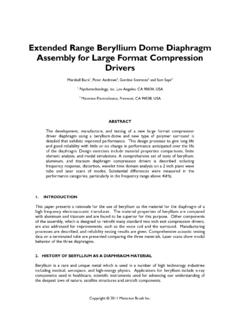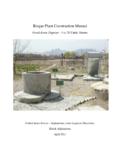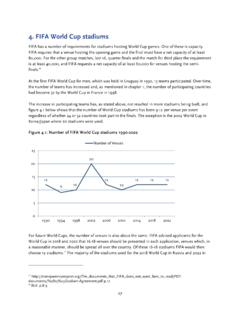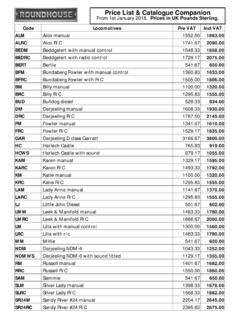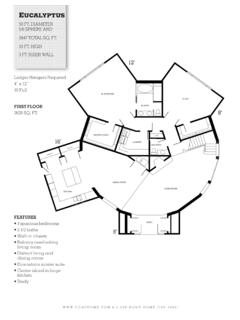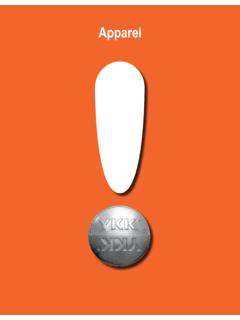Transcription of Instructions for the use & care of your HOME FIRES Fireplace
1 Instructions for the use & care of your home FIRES Fireplace Congratulations with the purchase of your new quality Fireplace ! You and your home FIRES Fireplace are going to make a great team. The contents of this leaflet will tell you all you need to know about your new Fireplace , and, if properly used and cared for, the unit will give you many years of trouble-free service. PLEASE READ THESE Instructions CAREFULLY! CONTENTS 1. First firing 2. Disposal of ashes 3. Maintenance 4. Safety precautions 5. Clearance to combustibles 6. General hints 7. Minor difficulties and their remedies 8. Installation Instructions 9. Exclusion of liability 1. FIRST FIRING - IMPORTANT! It is advisable on the first three of four firings, to light the fire during the day, opening windows for the first hour as some odour will rise off the Fireplace due to the paint curing.
2 This will disappear after the first couple of FIRES . It is also advisable to make moderate FIRES in the beginning to prevent damage to the unit and paintwork. Start with a small fire and build it gradually bigger. 2. DISPOSAL OF ASHES When removing ashes from your Fireplace , be careful and use a metal container with a tight fitting lid. Do not leave the ash pan on a combustible floor, as ash can remain hot for days. If you wish to spread ash on your garden, only do so if untreated wood has been burnt, as some wood treatment contains arsenic, a poison. 3. MAINTENANCE The Fireplace can be touched up with SNK74 spray paint as and when needed. Replace worn Fireplace grids as and when needed. Inspect the flue system annually for soot build-up and/or any other blockages, eg.
3 Bird nests. Clean the flue pipe when internal soot deposits are greater than 6 mm in thickness. It is normal for any Fireplace to show heat patches or some discolouration on the paintwork. Paintwork can be touched up with Plascon SNK 74 matt black paint or equal. Lubricate the shaft and bearing of the weather cowl with grease annually. External flue pipes and the cowl can be painted with any colour enamel paint. Attend to any sign of water leakage onto or inside the Fireplace . Rust will damage your Fireplace . 4. PRECAUTIONS 1. Use only dry seasoned wood (preferably of the acacia family) or good quality anthracite. Freshly cut wood must be stored dry and ventilated for at least one year before using it in the Fireplace . 2. Do not store fuel close to the appliance (refer: Clearance to Combustibles).
4 3. Do not use liquid fuels to start the fire (Liquid Firelighter may be used). 4. Do not over fire (allow firebox to glow red) as this could damage your Fireplace . Restrain the fire to the fire grid area and never make a big bonfire. 5. Do not burn garbage in the appliance as garbage can cause a dangerous soot build-up. 6. Do not prepare food in your Fireplace . 7. Do not burn chemically treated timber as poisonous gases can be released and can be harmful to your health. 8. Chimney pots are frequently the cause of smoking problems and therefore we recommend rather the use of a home FIRES chimney cowl to prevent downdraughts and rain from entering the chimney. 9. Before lighting a fire we recommend that you pressurize the room by opening a window on the windward side slightly to ensure that the Fireplace will not smoke during ignition phase and to provide sufficient combustion air.
5 10. If the fuel you are burning tends to splatter, the use of a fire screen is recommended to prevent damage. 5. CLEARANCE TO COMBUSTIBLES 1. A minimum clearance of 450 mm is required between the hot air outlet of a built-in Fireplace and any heat-sensitive mantelpiece or shelf situated above the appliance. 2. A minimum clearance of 300 mm is required between the front edges (left & right) of the built-in Fireplace and any heat-sensitive materials, other than a mantelpiece or shelf above the appliance. 3. A minimum clearance of 1000 mm is required between a free-standing Fireplace and any furniture, curtains, blinds, electrical appliances or any other combustible materials. 4. A concrete, masonry or tiled hearth is necessary to protect carpets or wooden floors from damage by sparks.
6 Hearths must extend a minimum of 350 mm to the front and 200 mm to the sides. 5. Keep the metal flue pipes at least 200 mm away from wood trusses. If closer use ceramic wool as insulator. 6. GENERAL HINTS Laying an anthracite or log fire 1. Before lighting the fire , open a window or ventilator on the windward side slightly to pressurise the room, ensuring that the Fireplace will not smoke and to provide sufficient air for combustion. 2. Place two or three layers of paper balls on the grate. These are made by scrunching up individual sheets of old newspaper into ball shapes. 3. Place some kindling (dry and finely cut small pieces and splinters of wood) or fragments of wax and paraffin fire lighters at random on top of the paper balls. 4. Pile one or two layers of anthracite or slightly larger pieces of wood on top of the paper balls.
7 Don t pack to tight. 5. Open the damper to maximise the intake of air from the room. Once the fire is well on its way it is usually best to close the damper partially so as to reduce the amount of heat escaping up the chimney. 6. Light the paper balls in three of four randomly spaced places. 7. To assist the burning paper in heating up and igniting the coals or logs, you can use fire bellows (which increases the amount of oxygen required for the combustion process). 8. Once the fire is lit, gradually add more layers of anthracite or larger logs, taking care not to apply too much too soon, or you will dampen down the fire and possibly extinguish it. 9. When further refueling is required it may be necessary to open the damper again. Choosing the correct fuel 1. Use dry, seasoned wood.
8 The moisture content of wood directly affects the way the appliance operates. Well seasoned dry wood (cut, split and stacked under cover for at least 12 months) will give best results and least problems. 2. Wet or green wood not only creates more work for you due to the increased weight when carrying it, but most importantly will not burn efficiently. You will receive less heat from wet/green wood as energy is used to evaporate the moisture from the wood. 3. Ideally, seasoned wood should contain 12% to 22% moisture. Wood with a moisture content of more than 22% will require a great deal more air to light, heat output will be cut dramatically, and soot and creosote will build up in your flue system. In addition, you may have smoke warting back into the room. If you hear your wood sizzle or you can see moisture bubbling from the ends of the logs placed on a hot fire , your wood is too wet.
9 4. If the fuel you are burning tends to splatter, the use of a home FIRES fire screen is recommended. Low grade anthracite tends to splatter a lot. Use only high grade anthracite and use large nuts of anthracite or coke. 5. Never use wood of the pine family. Pine contains a very high amount of resin. This can cause dangerous soot build-up and which can overheat your Fireplace . 6. You may use anthracite in your Fireplace . Buy the best grade of anthracite in order to prevent splattering and to produce more heat. 7. Do NOT use coal or briquettes. Flue damper control The damper control varies the size of the throat in the Fireplace , serving two purposes: a) Provides control over the burning rate of the fire and therefore the consumption rate of the fuel. b) Reduces the heat-loss up the chimney, thereby improving efficiency.
10 The fire in the home FIRES Fireplace is lit with the damper fully open to promote maximum draw from the fire . When the fire is burning well, the damper can be closed down to a position that will allow the fire to burn at the desired rate without smoking. This position will be determined by the draw on the chimney, the type and size of the fuel being burned and size of the fire . When loading new fuel, open the damper again to the full open position. Because each chimney has its own peculiarities, the damper should be used as best suits your chimney. It should never be closed so far as to cause the least trace of smoke in the room. MINOR DIFFICULTIES & THEIR REMEDIES COMPLAINT CAUSE SOLUTION Fireplace is not drawing and smoke is entering the room.


